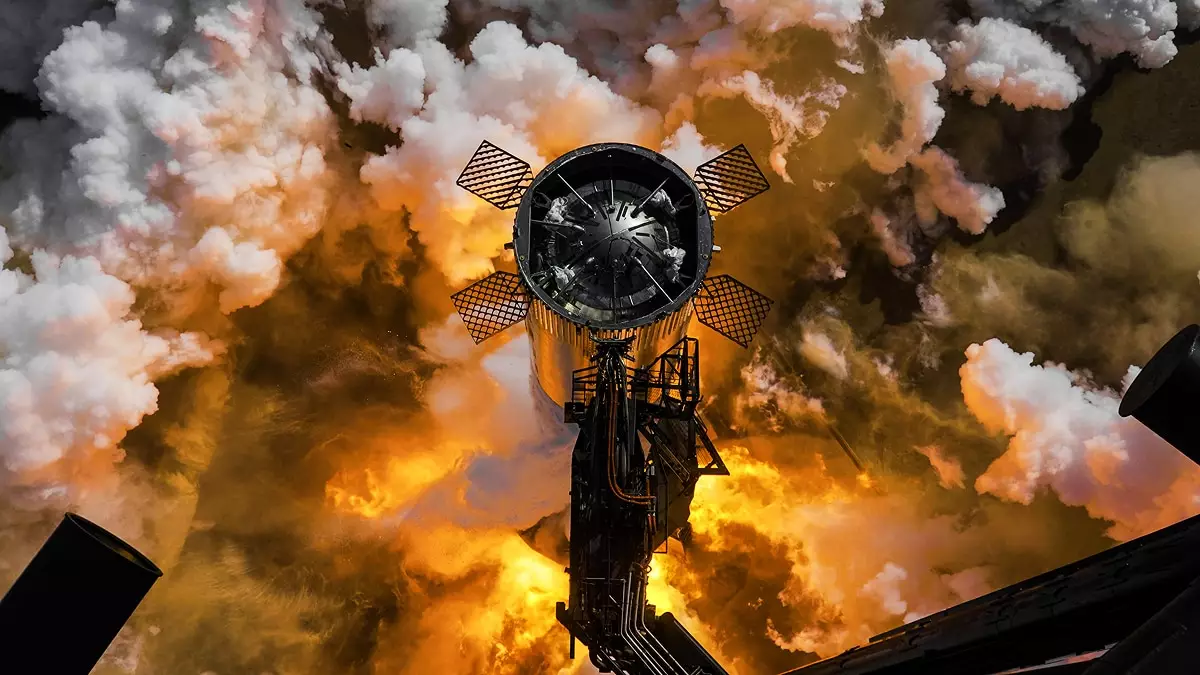SpaceX is currently intensifying its efforts to prepare for the next phase of its Starship program. A recent series of static fire tests at the company’s Starbase facility in Texas has underscored their commitment to this mission. Notably, the Super Heavy booster and the second stage of the Starship were both put through rigorous evaluations, simulating conditions reminiscent of actual launch scenarios. These tests are critical as they provide insights into the performance and reliability of the rocket components before they undergo further integration and flight tests.
The Super Heavy booster underwent a comprehensive static fire test that involved all 33 Raptor engines firing simultaneously. This test was designed to assess the booster’s full capabilities and validate its readiness for flight. Meanwhile, the second stage of the Starship engaged in a separate test, where engineers experimented with varying thrust conditions to closely mirror the dynamic demands of flight. The results of these trials are pivotal; they not only influence the design of future models but also enhance the engineers’ understanding of propulsion dynamics under different operational conditions.
Looking forward, SpaceX is gearing up for the integrated flight test, dubbed IFT-8, which is anticipated to take place at the end of February, pending approval from the Federal Aviation Administration (FAA). While the exact date for the launch remains uncertain, the planning for multiple Starship missions throughout the year aligns with SpaceX’s ambitious vision of revolutionizing reusable rocket technology. It’s crucial that all safety and regulatory requirements are met to facilitate these upcoming adventures into space.
Reflecting on recent history, the last test flight, IFT-7, in January 2025 faced its share of challenges. Although the Super Heavy booster was successfully recovered using a robotic arm, communication with the Starship’s second stage was lost mid-mission, culminating in debris observed falling over the Caribbean. Such incidents provide invaluable learning opportunities for engineers, motivating design enhancements aimed at achieving better flight stability and ensuring a controlled descent for both stages in future missions.
The Starship system is not merely a technological marvel; it is poised to play significant roles in various ambitious missions, including NASA’s Artemis program, which is set to facilitate humanity’s return to the Moon. Specifically, the Starship lander is slated for use in Artemis 3, with a target launch window in 2027. However, before this can happen, numerous additional test flights are essential to validate the system’s capabilities, ensuring it is equipped for the rigors of human spaceflight and other commercial aspirations.
As SpaceX accelerates its development of the Starship launch system, the blend of rigorous testing, innovative design improvements, and strategic planning lays the groundwork for a new era of space exploration. The program promises not just to expand our reach into the cosmos but also to set the stage for sustainable human presence beyond Earth. The journey ahead is fraught with challenges, but with each test, SpaceX inches closer to realizing its vision of making life multi-planetary.


Leave a Reply